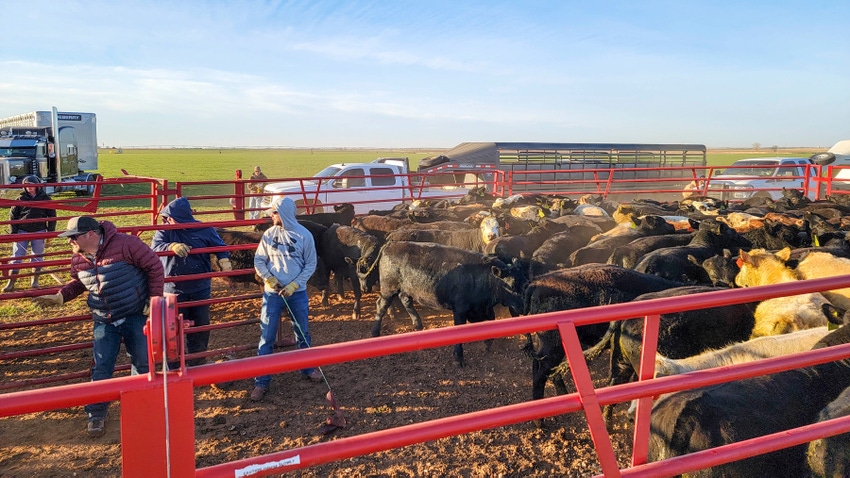Proactive Protection: Bagley Risk Management Tips
Wiki Article
Recognizing Livestock Risk Protection (LRP) Insurance: A Comprehensive Overview
Navigating the realm of animals threat protection (LRP) insurance can be a complicated venture for numerous in the farming field. From exactly how LRP insurance works to the different insurance coverage choices readily available, there is much to uncover in this detailed guide that can possibly form the method livestock manufacturers approach danger monitoring in their companies.

Exactly How LRP Insurance Coverage Works
Periodically, recognizing the auto mechanics of Livestock Threat Security (LRP) insurance coverage can be complex, but breaking down just how it works can provide clarity for breeders and farmers. LRP insurance coverage is a threat monitoring tool designed to protect animals manufacturers versus unexpected price declines. It's important to note that LRP insurance coverage is not a profits guarantee; instead, it focuses only on rate danger protection.Qualification and Protection Options

When it comes to insurance coverage options, LRP insurance policy provides producers the flexibility to pick the protection level, insurance coverage period, and endorsements that ideal fit their danger administration needs. Insurance coverage levels commonly range from 70% to 100% of the anticipated ending worth of the insured animals. Producers can additionally choose insurance coverage durations that line up with their manufacturing cycle, whether they are guaranteeing feeder cattle, fed cattle, swine, or lamb. Recommendations such as cost risk defense can further personalize coverage to shield versus damaging market changes. By comprehending the eligibility criteria and insurance coverage choices available, livestock manufacturers can make enlightened decisions to take care of risk effectively.
Pros and Disadvantages of LRP Insurance Coverage
When assessing Livestock Threat Defense (LRP) insurance coverage, it is crucial for animals manufacturers to consider the benefits and drawbacks integral in this danger administration device.
Among the main benefits of LRP insurance is its capacity to provide protection against a decrease in animals prices. This can assist secure producers from economic losses resulting from market changes. Furthermore, LRP insurance coverage supplies a level of versatility, permitting manufacturers to personalize protection degrees and plan periods to fit their specific demands. By securing in an ensured price for their animals, producers can much better manage threat and prepare for the future.
One constraint of LRP insurance is that it does not shield versus all kinds of risks, such as condition outbreaks or all-natural calamities. It is essential for producers to carefully analyze their individual risk exposure and financial scenario to figure out if LRP insurance is the right risk administration tool for their procedure.
Recognizing LRP Insurance Policy Premiums

Tips for Making The Most Of LRP Perks
Taking full advantage of the advantages of Livestock Risk Protection (LRP) insurance policy requires strategic preparation and proactive threat monitoring - Bagley Risk Management. To take advantage of your LRP protection, consider the adhering to pointers:Routinely Analyze Market Conditions: Stay educated regarding market trends and price variations in the livestock sector. By monitoring these aspects, you can make enlightened choices about when to buy LRP coverage to safeguard against possible losses.
Establish Realistic Coverage Levels: When picking protection levels, consider your manufacturing costs, market worth of livestock, and potential threats - Bagley Risk Management. Setting reasonable coverage degrees guarantees that you are appropriately shielded without paying too much for unneeded insurance coverage
Diversify Your Insurance Coverage: As opposed to depending exclusively on LRP insurance coverage, think about expanding your threat monitoring techniques. Incorporating LRP with various other risk administration tools such as futures contracts or options can supply comprehensive protection versus market unpredictabilities.
Testimonial and Adjust Insurance Coverage Routinely: As market problems alter, periodically assess your LRP protection to ensure it aligns with your current threat direct exposure. Adjusting protection levels and timing of acquisitions can help enhance your risk protection approach. By complying with these suggestions, you can make the most of the advantages of LRP insurance policy and protect your livestock procedure versus unexpected dangers.
Verdict
In verdict, animals risk security (LRP) insurance is a beneficial tool for farmers to take care of the financial dangers connected with their animals procedures. By comprehending just how LRP functions, eligibility and insurance coverage choices, along with try this the advantages and disadvantages of this insurance, farmers can make enlightened choices to safeguard their source of incomes. By carefully considering LRP premiums and applying strategies to make the most of advantages, farmers can reduce possible losses and guarantee the sustainability of their operations.
Animals producers interested in getting Animals Danger Security (LRP) insurance policy can check out a variety of qualification criteria and coverage alternatives tailored to their certain livestock operations.When it comes to insurance coverage Bagley Risk Management options, LRP insurance provides producers the versatility to select the insurance coverage level, coverage period, and recommendations that finest fit their danger administration requirements.To realize the complexities of Animals Danger Security (LRP) insurance totally, understanding the variables influencing LRP insurance premiums is critical. LRP insurance policy costs are determined by different aspects, including the protection level picked, the expected rate of livestock at the end of the coverage duration, the kind of livestock being insured, and the length of the protection duration.Review and Adjust Insurance Coverage Routinely: As market conditions change, periodically assess your LRP protection to ensure it lines up with your present threat direct exposure.
Report this wiki page